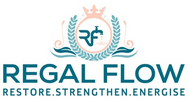
Industrial Reverse Osmosis Cost per Gallon: What UK Businesses Need to Know
Clean water doesn’t grow on trees—but it does flow through membranes. If your business relies on crystal-clear water (whether you’re bottling soft drinks, making pharmaceuticals, or fuelling countertop dispensers and reverse osmosis units), knowing how much it costs per gallon can make or break your bottom line. Reverse Osmosis Systems for Commercial & Industrial Applications breaks down the typical cost—around £0.05–£0.20 per gallon—and reveals what drives it, plus how to shrink it.
Breaking Down the Costs of Industrial RO Water Treatment
Let’s start with the basics: what exactly are you paying for when you invest in an industrial reverse osmosis (RO) system? It’s more than just the machine.
Initial Capital Investment (System Purchase and Installation)
First off — buying the kit. An industrial RO system can set you back anywhere from £10,000 to £50,000. That covers the unit itself, any necessary pre-treatment gear (like filters or softeners), and installation by skilled engineers. Take a food manufacturer in Manchester, for example. Their bespoke system cost £30,000, but because it was tailored to their site, it meant fewer headaches later on. That upfront spend can feel steep, but it’s the foundation for long-term efficiency.
Operational Expenses (Energy, Chemicals, Labour)
Running costs are where the meters start ticking. Every time you fire up the RO unit, you’re paying for:
– Electricity to pump water through membranes
– Chemicals to clean and condition the water
– Labour to keep things ticking over smoothly
Expect £0.05–£0.10 per gallon in this category. Businesses that optimise their schedules to run during off-peak energy hours can trim this number even further — handy if you’re in manufacturing with flexible shifts.
Maintenance Costs (Membrane Replacement, Filter Changes)
Like any bit of kit, RO systems don’t look after themselves. Membranes usually need swapping every 2–5 years, depending on how kind you are to them. You’re looking at £500–£2,000 a year for replacements and filter changes. A pharmaceutical plant in Cambridge cut their annual membrane spend by 30% just by tightening their maintenance routine — a win for both water quality and budgets.
Waste Disposal Costs (Concentrate Management)
RO systems split water into clean permeate and waste concentrate. That waste stream doesn’t just disappear — you’ll need to deal with it.
Costs can include:
– Discharge permits
– Treatment before disposal
– Transport fees (if removing off-site)
In short? Ignore waste management at your peril — both financially and environmentally.
Factors Influencing the Cost Per Gallon of Industrial RO
Okay — why does one factory pay £0.06 per gallon and another closer to £0.18? Let’s dig into the drivers.
Feed Water Quality and Pre-Treatment Needs
Poor-quality source water = higher costs. If your feed water is full of sediment, hardness, or organic nasties, you’ll spend more on pre-treatment gear to protect those membranes. For instance, a textiles factory in Leeds added advanced softening units to reduce scaling — a smart move that doubled membrane lifespan.
System Size and Capacity
Bigger systems tend to mean cheaper water per gallon. That’s economies of scale in action. A large brewery pulling thousands of gallons a day gets a better deal than a small plant with lower throughput. It’s like bulk-buying… but for water.
Energy Efficiency of the System
Old, clunky systems guzzle electricity. Modern units with high-efficiency pumps and smart controls can slash energy bills. A West Midlands electronics manufacturer upgraded to a pressure exchanger unit and saw energy use drop by 35%. The payback? Just under 3 years.
Membrane Lifespan and Replacement Frequency
The better you treat your membranes, the longer they last. Poor maintenance and bad feed water means more frequent (and expensive) swaps.
Local Energy and Chemical Prices
Location, location, location. If you’re based somewhere with sky-high electricity rates or costly chemicals, your per-gallon cost will reflect that. A plant in rural Scotland saw savings by bulk-ordering chemicals regionally — avoiding high delivery fees.
Estimating the Cost Per Gallon: A General Overview
Right — the numbers you came for. Typical UK cost per gallon = £0.05–£0.20.
Here’s how to crunch yours:
(Annual total costs) ÷ (Gallons treated annually) = Cost per gallon
Bigger, more efficient systems sit at the lower end — smaller or less optimised ones drift higher.
Strategies for Reducing the Cost Per Gallon
Now the good bit — how to spend less while keeping your water top-notch.
Optimising Pre-Treatment Processes
Better pre-treatment = fewer membrane headaches.
Consider:
– Multi-media filters
– Softening systems
– Anti-scalant dosing
A Birmingham confectionery firm halved its cleaning costs after improving pre-filtration — all by installing a simple sand filter.
Implementing Energy Recovery Systems
Devices like pressure exchangers and turbochargers capture and reuse energy from the waste stream. This can slash power use by 20–40%. For larger plants, these gadgets often pay for themselves in 2–4 years.
Proper System Maintenance and Operation
A stitch in time saves nine… and pounds. Regular membrane cleaning, filter swaps, and performance checks keep systems running sweetly — saving costly breakdowns later.
Comparing Industrial RO Cost to Other Water Treatment Methods
How does RO stack up against other options?
– Softening/Filtration: cheaper upfront, but no ultra-purity
– Ion Exchange: great for specific minerals, but chemical-intensive
– Distillation: extremely pure but eye-watering energy costs
For high-volume, high-purity needs, RO often wins on balance of cost, quality, and scalability.
Conclusion: Analysing and Optimising the Cost of Industrial RO Water
So, there you have it. Industrial RO water in the UK costs roughly £0.05–£0.20 per gallon, depending on setup, efficiency, and savvy management. Optimise pre-treatment, invest in energy recovery, and look after your membranes — and your business can enjoy crystal-clear water without draining the coffers. Whether it’s keeping drinks fizzy, tablets pure, or countertop dispensers and reverse osmosis units flowing — getting the maths right makes all the difference.
More Reverse Osmosis info we think you'll love
RO Systems in the Food & Beverage Industry: Enhancing Quality and Compliance
Implementing RO Technology in Hospitality: Elevating Guest Experience
Reverse Osmosis in Healthcare and Laboratories: Ensuring Purity and Safety
Optimising Coffee Shop Operations with RO Water Filtration
Selecting the Right Commercial RO System for Your Business
Maintaining Your Commercial RO System: Best Practices and Tips
Which Chemical is Best for RO Membrane Cleaning?
Commercial Water Filtration Systems
Light Commercial Reverse Osmosis System
Reverse Osmosis Pressure Vessel
Reverse Osmosis vs Carbon Filter


Leave a comment